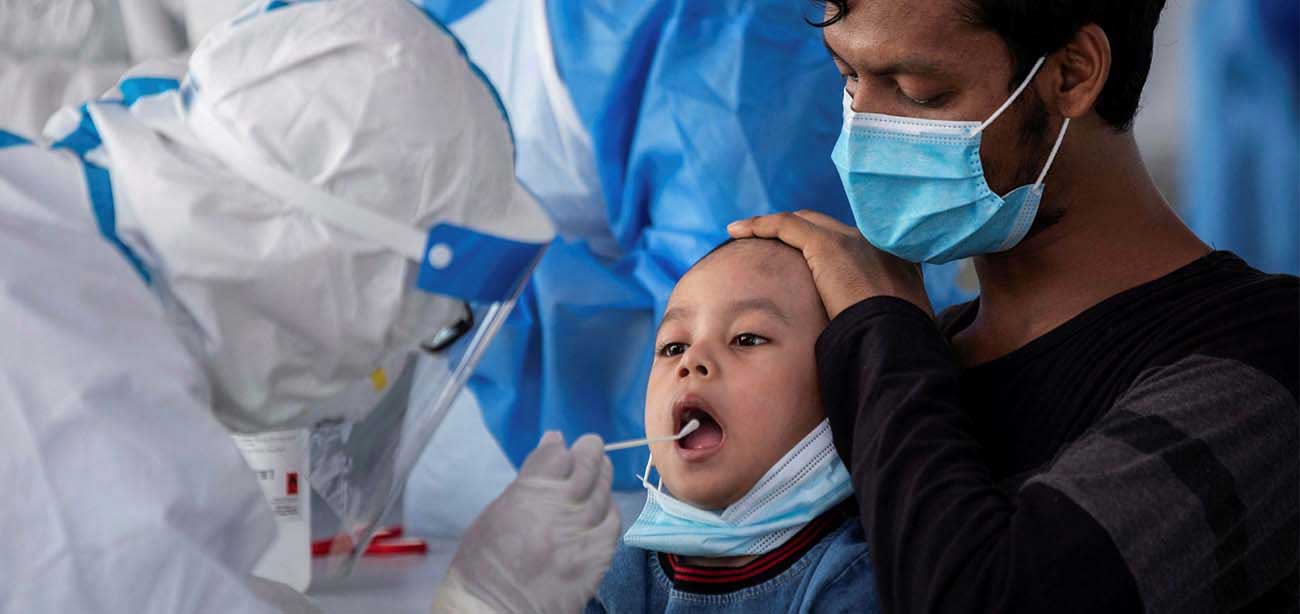As COVID-19 has spread, so has misinformation – discrimination and stigma working with health experts to promote facts over fear, bringing trustworthy guidance and answering some of the questions families might have.
Coronavirus disease 2019 (COVID-19) – ‘CO’ stands for corona, ‘VI’ for virus, and ‘D’ for disease

Characterizing COVID-19 as a pandemic is not an indication that the virus has become deadlier. Rather, it’s an acknowledgement of the disease’s geographical spread.
Many COVID-19 symptoms are similar to those of the flu, the common cold and other conditions, so a test is required to confirm if someone has COVID-19. Symptoms may appear 2 to 14 days after exposure to the virus and can range from very mild to severe illness. Some people who have been infected don’t have any symptoms.
The most common symptoms are fever, cough, and tiredness. Other symptoms can include shortness of breath, chest pain or pressure, muscle or body aches, headache, loss of taste or smell, confusion, sore throat, congestion or runny nose, diarrhea, nausea and vomiting, abdominal pain, and skin rashes. In addition to these symptoms, infants may have difficulty feeding.
Children of any age can become ill with COVID-19. While children and adults experience similar symptoms, children generally have less serious illness than adults. (See “Does COVID-19 affect children?”)
Symptoms requiring urgent medical attention include difficulty breathing/fast or shallow breathing (also grunting, inability to breastfeed in infants), blue lips or face, chest pain or pressure, confusion, inability to awaken/not interacting, inability to drink or keep down any liquids, severe stomach pain.
Also, there is a vaccine for the flu – so remember to keep yourself and your child up to date with vaccinations.
Here are some precautions you and your family can take to help avoid infection:
This is a new virus and we are still learning how it affects children or pregnant women. We know it is possible for people of any age to be infected and transmit the virus, although older people and/or those with pre-existing medical conditions seem more likely to develop serious illness.
There are reports of a rare but serious multisystem inflammatory syndrome affecting children and adolescents, possibly associated with COVID-19. Clinical features can include but are not limited to: persistent fever; rash; red or pink eyes; swollen and/or red lips, tongue, hands, feet; gastrointestinal problems; low blood pressure; poor blood flow to organs; and other signs of inflammation.
Many of these children have tested positive for COVID-19. However, it is not known for sure whether COVID-19 infection is triggering this condition. So far, these cases have been reported mostly in North America and Europe. We do not know yet whether the condition is present in other parts of the world and just not yet recognized.
Children who have these symptoms should seek medical care. Early diagnosis and treatment are critical, but initial reports suggest most cases responded well to anti-inflammatory treatment.
Children may be disproportionately affected by measures taken to control the COVID-19 outbreak, such as school closures and physical distancing measures. Special attention needs to be paid to prevent and minimize negative consequences for children as much as possible.
Seek medical attention, but remember symptoms of COVID-19 such as cough or fever can be similar to those of the flu, or the common cold – which are a lot more frequent.
Continue to follow good hand and respiratory hygiene practices like regular handwashing so that your child is protected against other viruses and bacteria causing diseases.
As with other respiratory infections like the flu, seek care early if you or your child are having symptoms, and try to avoid going to public places (workplace, schools, public transport), to prevent it spreading to others.
At this time, there is not enough evidence to determine whether the virus is transmitted from a mother to her baby during pregnancy, or the potential impact this may have on the baby. This is currently being investigated. Pregnant women should continue to follow appropriate precautions to protect themselves from exposure to the virus, and seek medical care early, if experiencing symptoms, such as fever, cough or difficulty breathing.
All mothers in affected and at-risk areas who have symptoms of fever, cough or difficulty breathing, should seek medical care early, and follow instructions from a health care provider.
Considering the benefits of breastfeeding and the insignificant role of breastmilk in the transmission of other respiratory viruses, the mother can continue breastfeeding, while applying all the necessary precautions.
Copyright © Dr. Anil Solanki